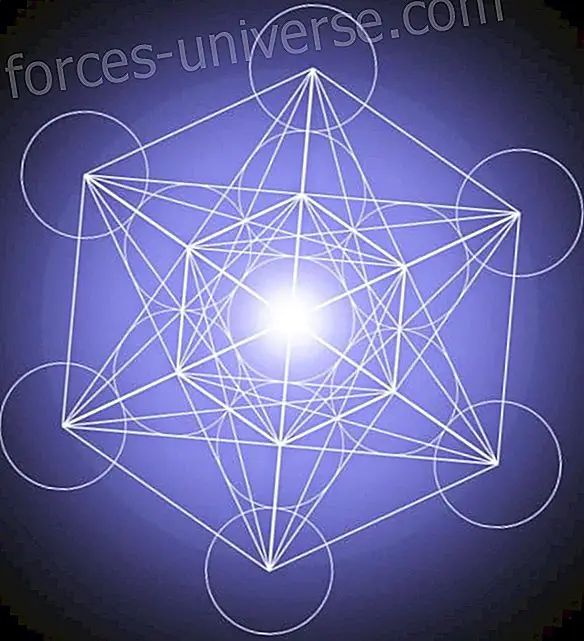Talmud: Characteristics, history and influences of this important holy book
- 2019

Throughout history, human beings have been looking for the root of their existence. And it has left its mark on that path since the beginning of time. These footprints are the bases from which we settled to continue that path. Well, we crave, as a species, the answers to the most essential question of our existence.
Among these traces, the old books stand out. Where thinkers, philosophers, astrologers and historians of all time have been collecting their notes. Experiences and life lessons, clues in its path and logical conclusions.
They tell our story.
Thus, the trace of the story that we will talk about today is the Talmud. This book, inheritance of the Jewish tradition for all mankind, is an authority in rabbinical Judaism.
So stay with us while we make a brief presentation about this wonderful book.
What is the Talmud?
The Talmud is, after all, a collection of paradoxes. Although its framework is logical and organized, its base is in free association. This means that the main objective of the Talmud is that people can interpret and comment on the law book known as Mishna.
However, the Talmud is a work of art that goes far beyond a study book.
The key to this work is in its name: "Talmud". Talmud means, in the ancient herbreo, to 'study', 'learn' and 'fulfill the commandment of the study of Torah. I study this which is in itself a goal and a reward.
However, those who are wise in this area are not simply people who have been students and teachers. No, but their own lives constitute the Torah.
The Talmud is made up entirely of questions and answers. And the interesting thing is that unlike most of the sacred books, in this case people should question what they are reading. Although not anyone can question it.
Since the Talmud demands tremendous quantitative scholarship by those who study it.
Origins of the Talmud
As the ancient Jewish tradition tells us, the Oral Torah was granted on Mount Sinai, along with the tables of the Written Law. And this was transmitted and studied orally for generations and generations in the Jewish people. And it is not until the second century CE that Rabbi Rav Yehuda Hanasi performs the first written summary of this Oral law: Mishna.
From this moment there is a period of three hundred years, where scholars studied and debated on this summary. And these debates and comments during those three hundred years were compiled in the Gemara (also known as Talmud in the strictest sense).
In Palestine, the discussions of the wise were compiled in the Talmud of the Jerusalem version. And this was edited by those disciples of Rabbi Yohanan, the 4th century CE. in Tiberias.
The Babylonian Talmud, a homologous fruit of the diaspora, resulted from a compilation carried out by Rav Ashi and Ravina, these in the fifth century CE. And it is also considered the most extensive and strict.
In that way, the Talmud results from the conjunction of the Mishn and the Gemara.
The Talmud and its content
It is considered that the Tor includes everything that is contained in the world. Thus, everything related to life is the object of study of those interested in the Talmud.
All habits, customs, culture and occupations, those observations about nature, questions related to language and the problems of ethics.
All this is matter of the Tor . Although the wise did not put the focus on speculative philosophy or pure science.
It is this free association, the vision of the Torah, that gives essence to a constant transition in the book of the Talmud. In it he goes from one subject to another without objection. It is transported from one sphere to the other, because all knowledge interacts with each other.
We must understand that the Talmud, instead of being written in a linear manner, resembles the minutes of a great congress held many centuries ago. And in it dozens of former great sages participated.
That is why the concept of the edition of this sacred book does not resemble a conventional edition.
The Talmud's style
Thus, the edition of this book tells us about the way to interact and participate in those great rooms of ancient Babylon. Well, it is in them where the discussions and debates that are registered in the Talmud originated.
This book invites us to associate, while evolving while remaining extremely precise. In this way, we find the Talmud analogy as a river that runs orderly in one direction.
But the Talmud is not only a particular book in terms of the theme it addresses, but also in the logical system according to which it should be analyzed. As an example, in this book you will not find thoughts derived from abstract concepts. And this is so despite the fact that the issues it deals with are often very conceptual, given the models used to address them.
Objectives of the book
In addition, it should be noted that one of the most interesting aspects of the discussion based on the Talmud is that the issues that are addressed are not laws in the strict sense of the word. It is, instead, a mere clarification of situations and events that are real and very important.
The primary objective of the Talmud is to bring those who read it to the truth, which cannot be classified hierarchically by importance. Thus, what appears to be a lack of discernment between what is important and what is not, between what is useful and irrelevant, is the manifestation of those many truths that cannot be prioritized.
The importance of the Talmud
The Talmud is the creation of the Jewish people, but it has also strongly influenced its very identity. In this book it is that this tradition has inspired and connected many aspects of life: Philosophy, biblical exegesis, and even some works whose relationship with the Talmud is not guessed at first sight. As is the case with poetry or the prayers themselves.
The scope of its socio-historical implications is also extensive, as there are currently no Jewish communities that have suffered the deprivation of the study of the Talmud.
The elements of the Talmud
This sacred book comes from two primary elements. It not only constitutes the backbone of the totality of Jewish wisdom. But it also does not give rise to the possibility of mechanically memorizing its content. It is impossible to study this book without getting involved intellectually and emotionally with it.
This "sacred intellectualism, " this strange combination of absolute faith and skepticism that leads us to question it has been a primary feature in this town for centuries.
In the same way, it is considered a powerful balance factor. That sane voice that guides people in a world that is often not in harmony. Save the Jewish people from materialism, and also from mysticism. Well, it is, to some extent and uniquely, a synthesis of both elements.
Thus, the Talmud is not a schematic text. It is, instead, a part of life. This is why no matter where you start, whoever reads it will constantly find itself in the midst of all things.
The capacity for understanding can only be obtained through study, and the deeper it is, the greater the depth of understanding. He who studies the Talmud will find himself in a spiral of constant increase. Well, as the wise have said: ' Everything has limits. Even Heaven and earth have them. Only the Torah is unlimited . '
AUTHOR: Lucas, editor and translator of the great family of hermandadblanca.org
SOURCES:
- https://steinsaltz.org/talmud/
- http://gizra.github.io/CDL-ES/pages/04742146-4A6C-FCA8-766B-176722205CC9/
- https://es.wikipedia.org/wiki/Talmud
- https://www.caiv.org/2016/11/29/que-es-el-talmud/






